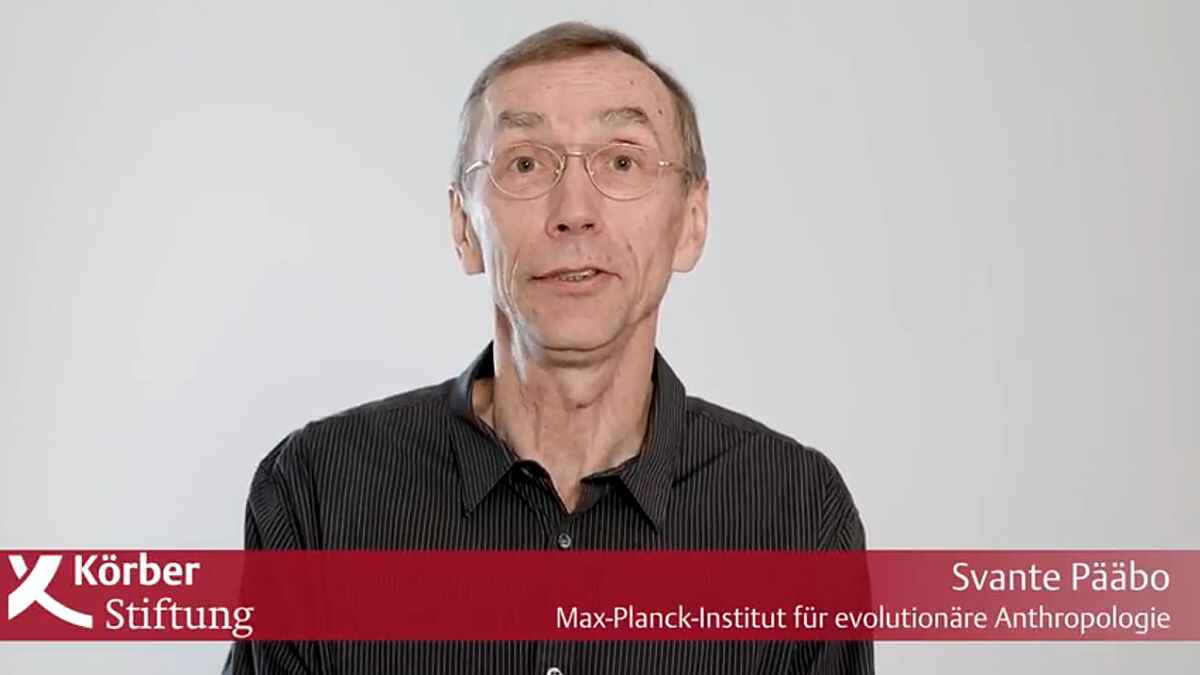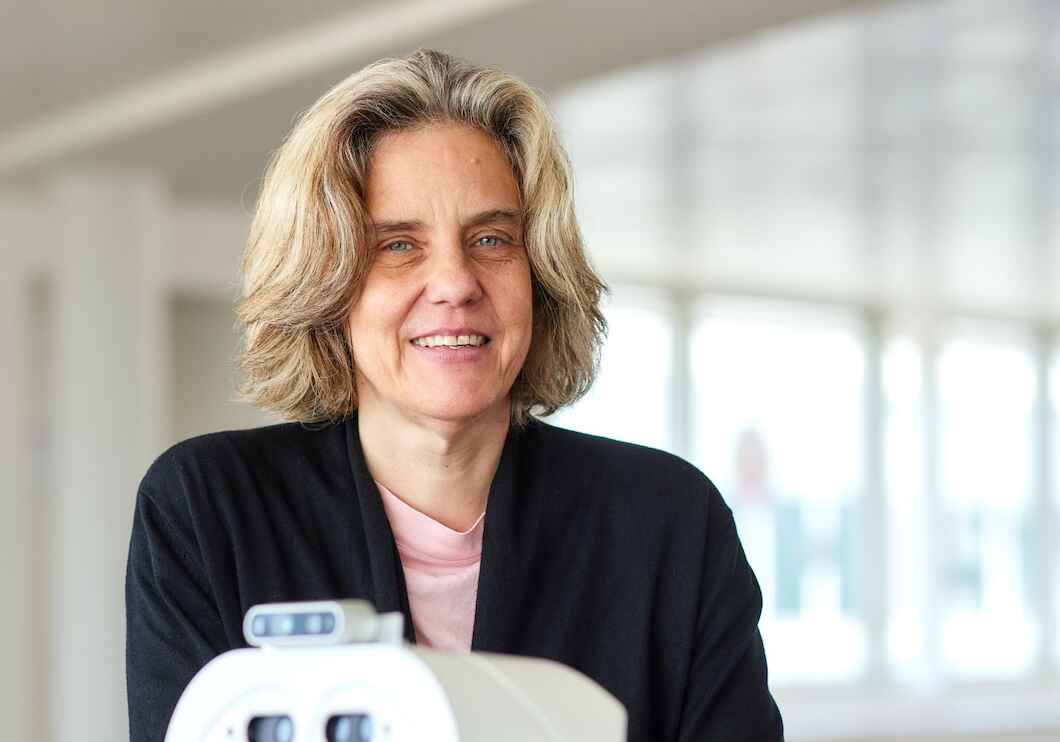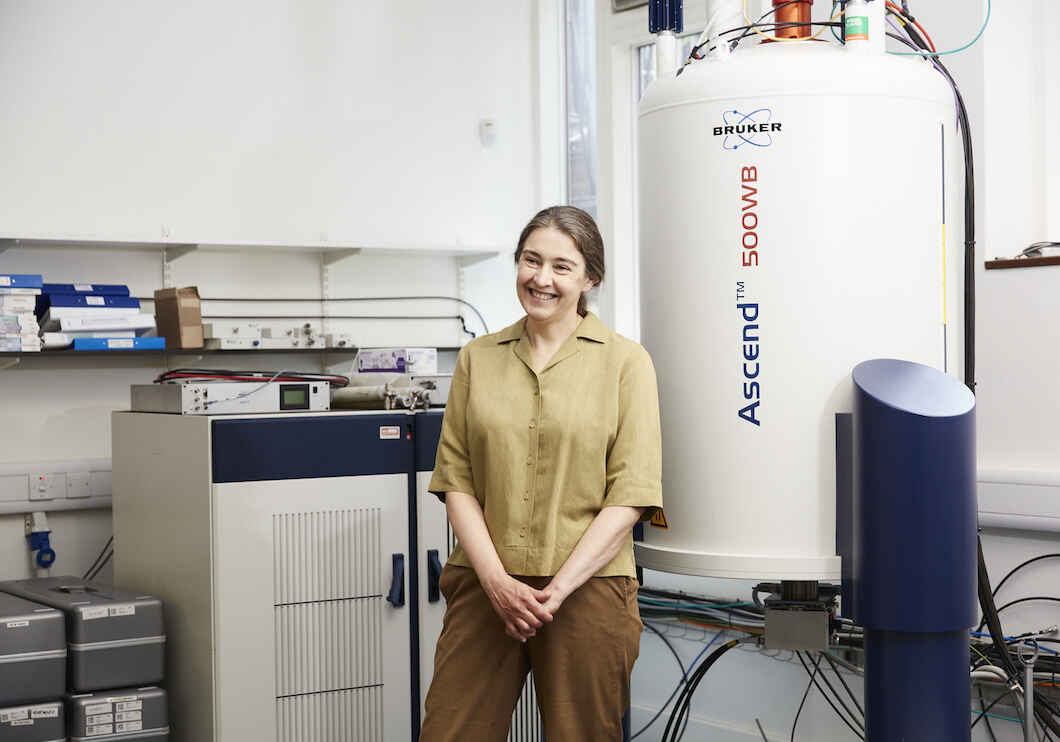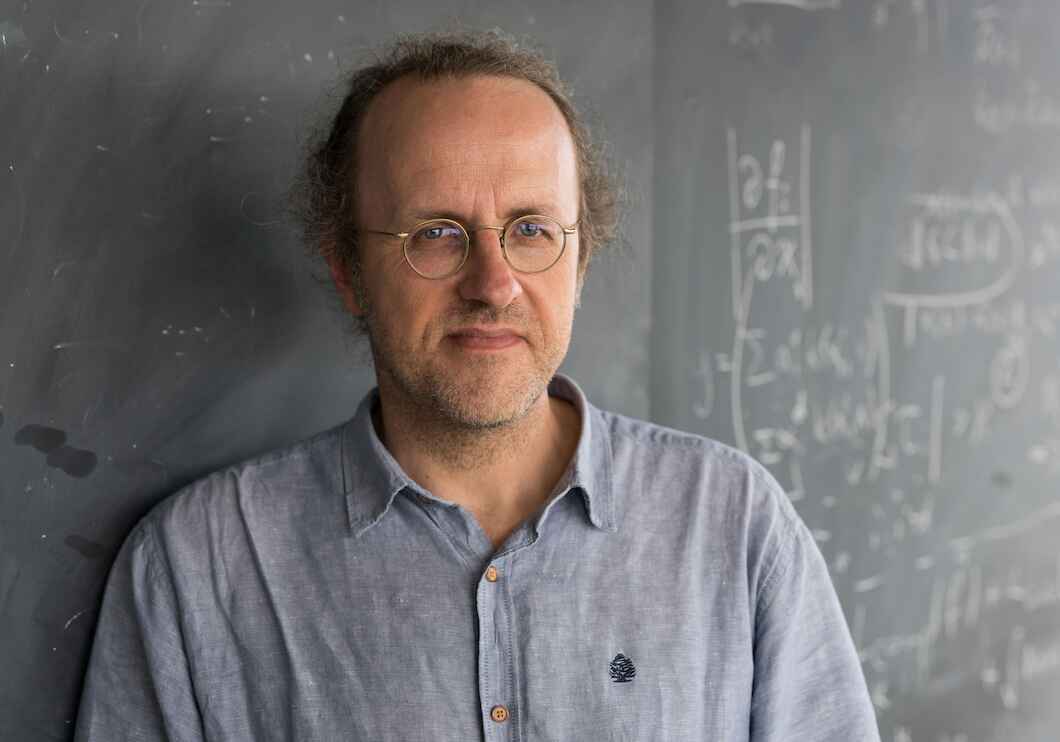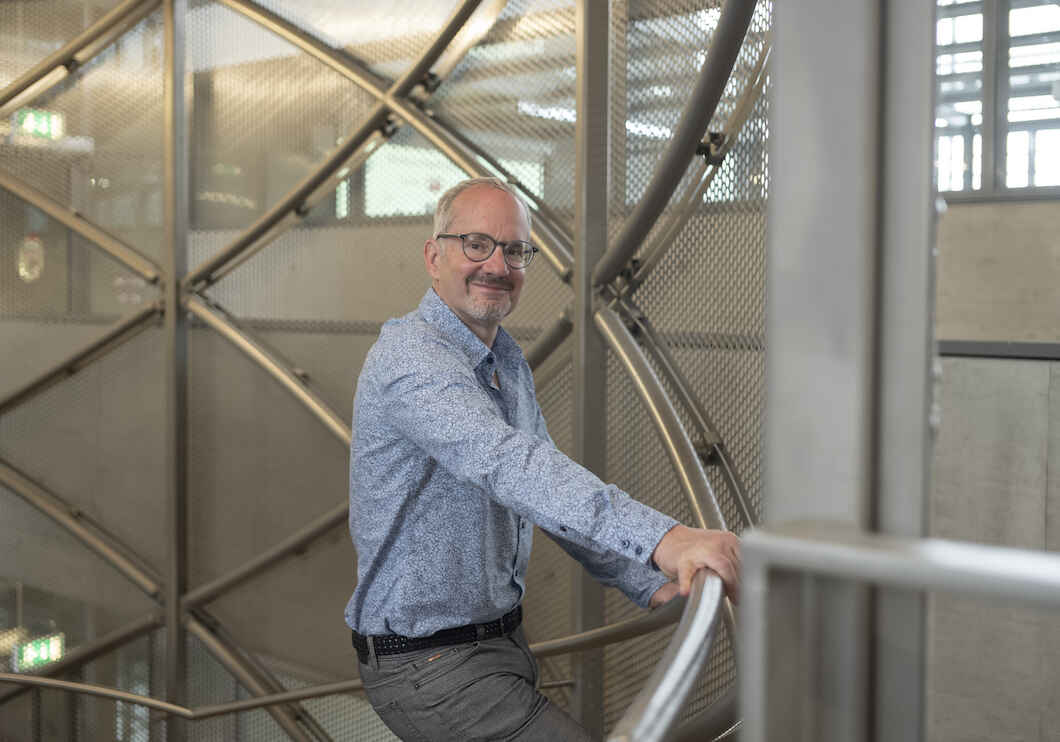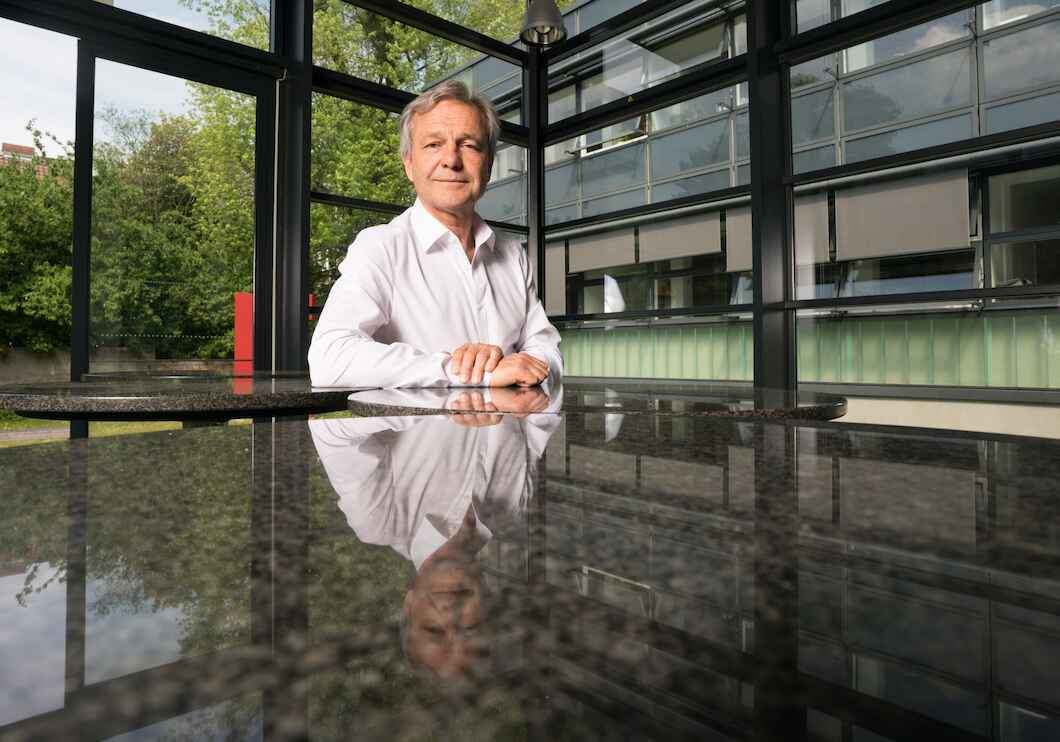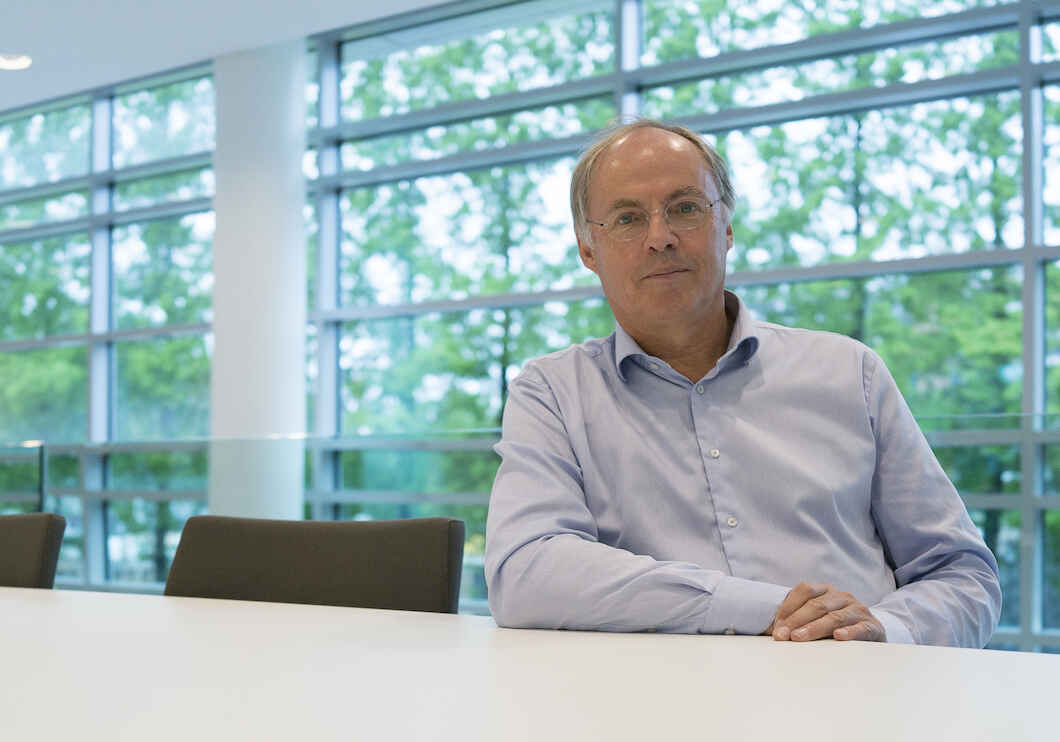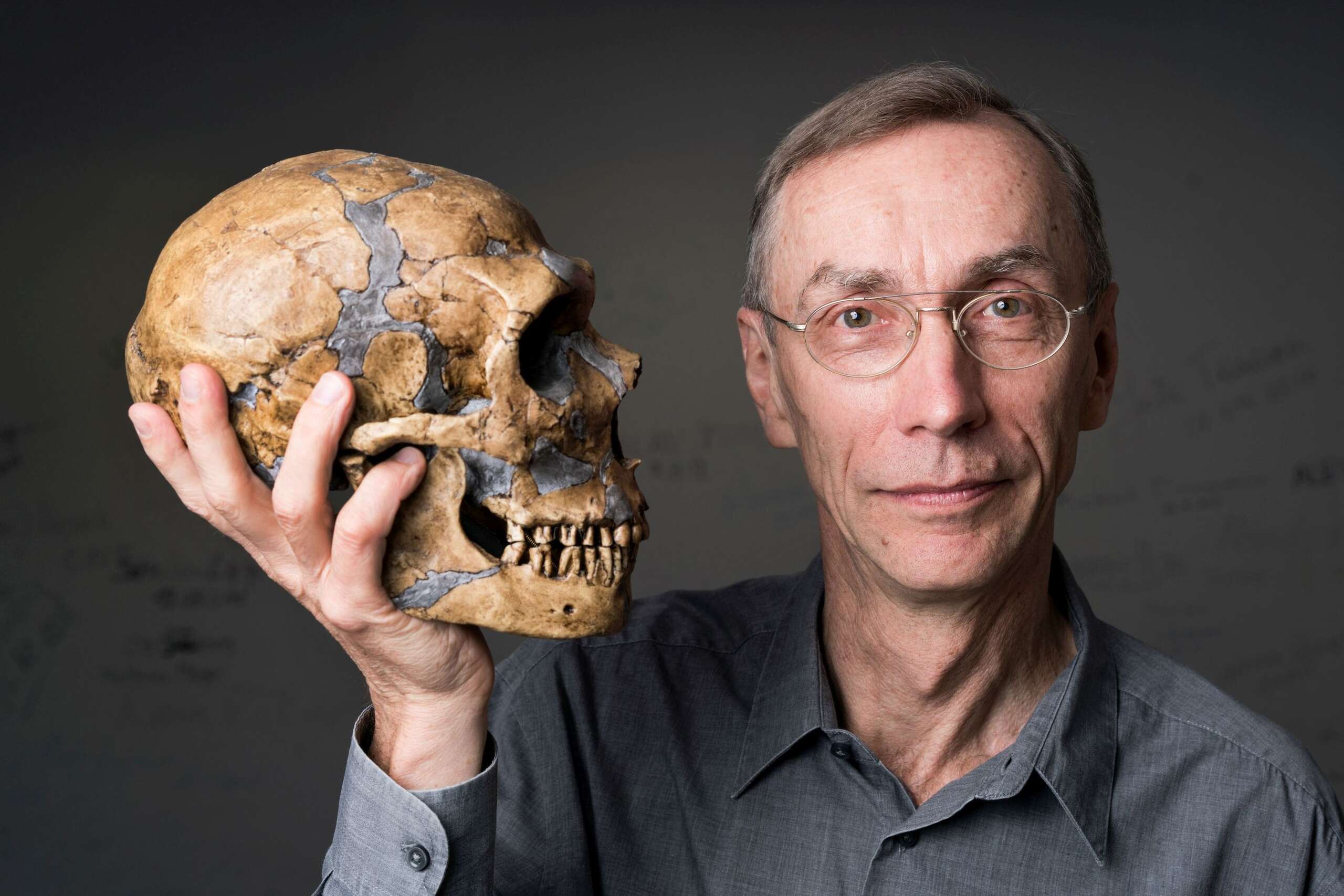
Photo: Friedrun Reinhold
Svante Pääbo (2018):
The Genes of the Neanderthals
Svante Pääbo succeeded in accomplishing the scientific feat of reconstructing the complete genome of Neanderthals from bones that were many thousands of years old. He – a Swedish physician – employed a modern sequencing machine to analyze the DNA. With the machine and thanks to sophisticated methods, Pääbo and his colleagues were able to amplify (i.e., copy) the old DNA and to determine the sequence of the bases (i.e., building blocks) that it contained. Comparisons of the Neanderthal genome with the genetic makeup
of current humans revealed that early modern humans and Neanderthals had interbred about 50,000 years ago. It was at that time that our ancient ancestors left Africa and migrated to Europe and Asia. This gene flow presumably strengthened the immune system of early modern humans and enabled them to adapt more quickly to the cold northern climate.
The Genes of the Neanderthals
Text: Claus-Peter Sesín
Photos: Friedrun Reinhold
Scientists long believed that it was impossible to extract DNA from the bones of Neanderthals. Before being excavated by archeologists, these bones had been lying in the deeper layers of moldy caves for at least 30,000 years, where prehistoric man once dwelled and died. Following the death of a Neanderthal, a host of bacteria, fungi, and other microbes infested the bones. It appeared extremely unlikely that a sufficient amount of original DNA remained intact.
Yet Svante Pääbo was able to prove the skeptics wrong. In 2010 he published a scientific sensation in the scientific journal Science: his team had succeeded – despite all the prophecies of doom – in decoding 60% of the Neanderthal genome. In 2014 Pääbo and his colleagues had even mapped this entire archaic genome. It was the first time that scientists had been able to produce the complete genetic makeup of an extinct member of the genus Homo.
“Neanderthals are the closest relations of humans”, says Pääbo. “Comparisons of their genome with that of humans today or with those of other extinct hominins and chimpanzees provide precise molecular biological answers to fundamental questions concerning our evolutionary origin”. In the process it may in the future also be possible to clarify which properties made modern humans – who dominate the earth today – such a model of success.

The idea of analyzing the genome of humans who died thousands of years ago occurred to Pääbo while he was a student. He attended at the Swedish University of Uppsala, initially studying Egyptology for a few semesters and subsequently medicine. As a doctoral candidate – he obtained his doctorate in immunology – he decoded the DNA of a 2400 year old Egyptian mummy by secretly working at night and on weekends. With the approval of his doctoral advisor, Pääbo published the results in the prestigious science journal Nature in 1985, and thus gained early academic recognition as a pioneer in the new field of research called paleogenetics.
Paleogeneticists analyze the genomes of extinct humans and animals, from which they draw inferences about the course of evolution. Paleoanthropologists, who in contrast are a guild of scientists working in a more traditional fashion, deduce human history by measuring and categorizing hominid bone findings, something that often provides less unequivocal results.

“Neanderthals are the closest relations of humans. Comparisons of their genome with that of humans today
or with those of other extinct hominins and chimpanzees provide precise molecular biological answers to fundamental questions concerning our evolutionary origin.”
Svante Pääbo
As a postdoc, Pääbo worked in the team of the evolutionary biologist Allan Wilson at the University of California in Berkeley. Starting in 1990, the Prize winner led his own lab at the Ludwig Maximilians University in Munich. In 1997, Pääbo moved to the newly founded Max Planck Institute for Evolutionary Anthropology in Leipzig, where he became one of its five directors and has conducted his research ever since.
As early as in the mid 1990s, while in Munich, Pääbo succeeded in achieving an important partial success. His team decoded a portion of the relatively short mitochondrial-DNA of a Neanderthal. Mitochondria are tiny power plants, hundreds of which swim in cells and provide them with energy. They have DNA of their own, referred to as mtDNA. When Pääbo compared the Neanderthal-mt-DNA with that of modernday humans, he noted that the two were clearly different. With this discovery, he refuted – microbiologically – the school of thought held by some classical paleoanthropologists that Neanderthals were a direct ancestor of modern humans. For this analysis, Pääbo used a specimen from the upper arm bone of the Neanderthal that was the first to have been found in the Neanderthal region near Dusseldorf in 1856 and recognized as being something special. That discovery led to the establishment of classical paleoanthropology.
Mitochondria are only inherited from the mother via her egg cell. mt-DNA is therefore ideally suited for tracing back the maternal genealogy. Using mutations in the mt-DNA, Allan Wilson’s team in Berkeley determined in 1986 that the genealogy of women alive today can be traced back to a “mitochondrial Eve”, our common ancestor who had lived in Africa 100,000 to 200,000 years ago. Based on this, Wilson founded the “out of Africa” hypothesis that located the origin of modern man in Africa.
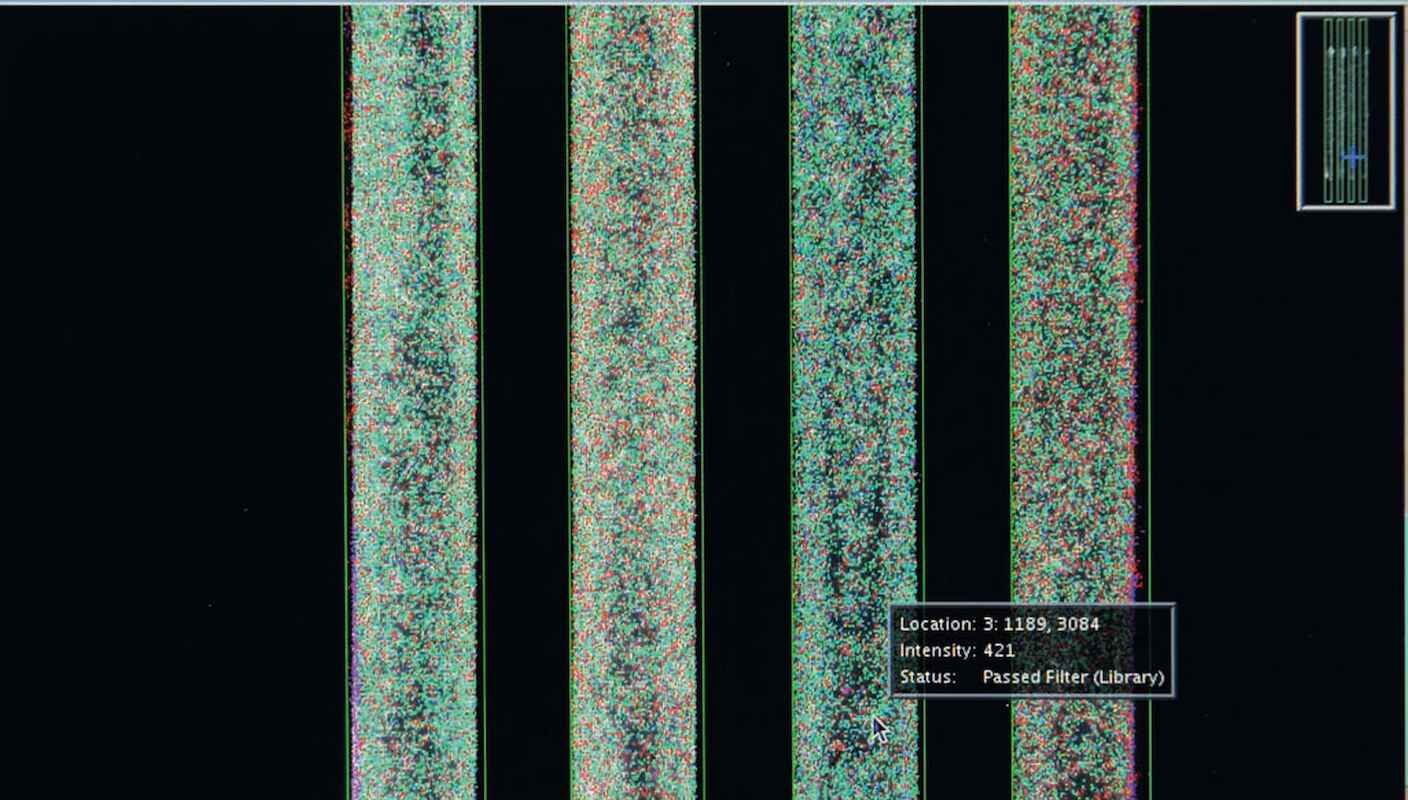
Technical piecework: To be able to analyze the genome as rapidly as possible, a high-throughput sequencer determines the sequence of bases in billions of DNA fragments simultaneously. In the process, the bases are made visible in the form of differently colored points of light. 
Some 130,000 years ago, early modern humans began to migrate north from Africa. Bit by bit they settled in Europe and Asia, becoming as it were the vanguard of today’s global population. In human history, there has however been more than one migratory wave out of Africa; it has in fact happened frequently. Already 1.8 mil lion years ago, the early hominin Homo ergaster – who could even handle fire and used stone tools – reached the Caucasus, and some even reached eastern Asia. And 1.2 million years ago, Homo erectus even spread to what is today northern Spain. In the following wave, some 600,000 years ago, Homo heidelbergensis – named after a bone find near Heidelberg – reached Europe. Homo heidelbergensis may be the common ancestor of both the Neanderthals and modern humans, whose development separated some 450,000 years ago.
For his analyses of Neanderthal mtDNA, Pääbo used the polymer chain reaction. This is a technique discovered in the mid 1980s that employs the polymerase enzyme to amplify the amount of DNA. He also employed completely automated sequencing machines. The human genome project was initiated with such machines in the USA in 1990. At the time, however, they were so slow that the human genome was not completely decoded until 2001, eleven years later.
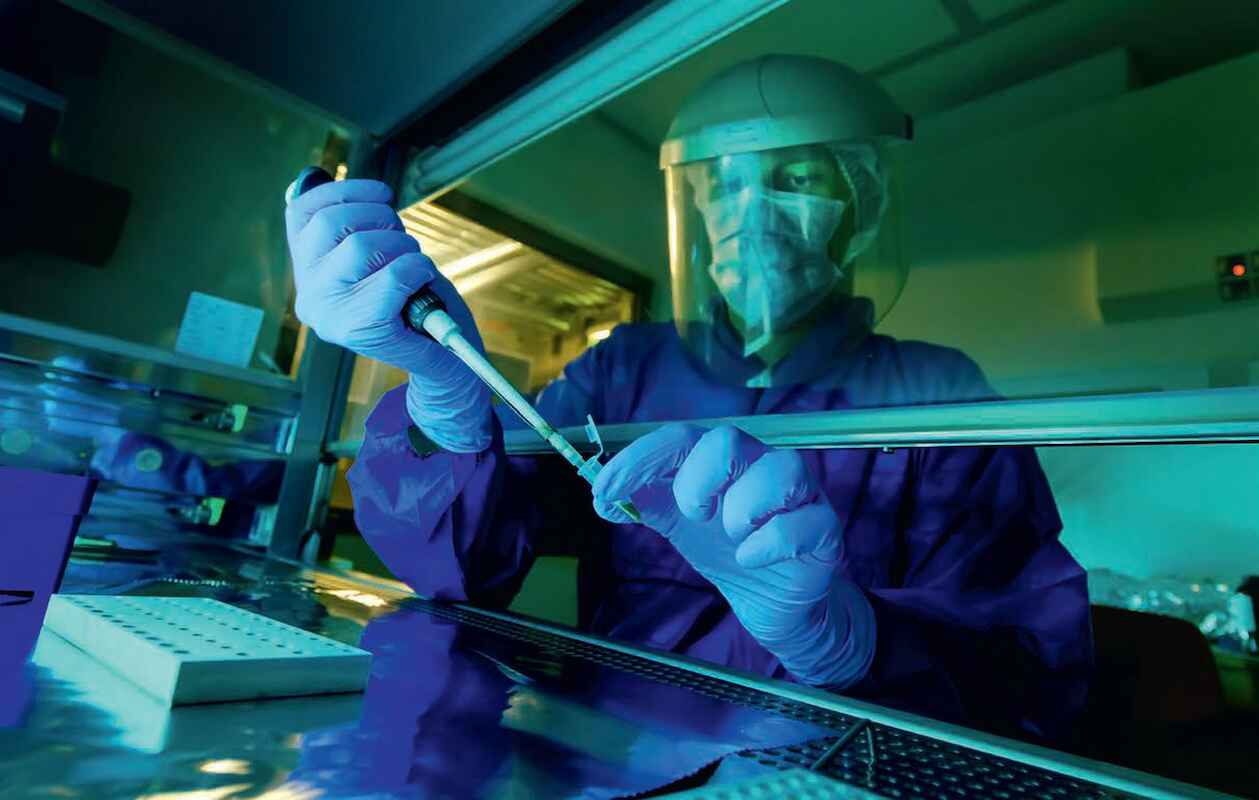
Here the extraction of DNA from Neanderthal bones is being prepared. To avoid contamination, the scientists work under cleanroom conditions similar to those in the chip industry. 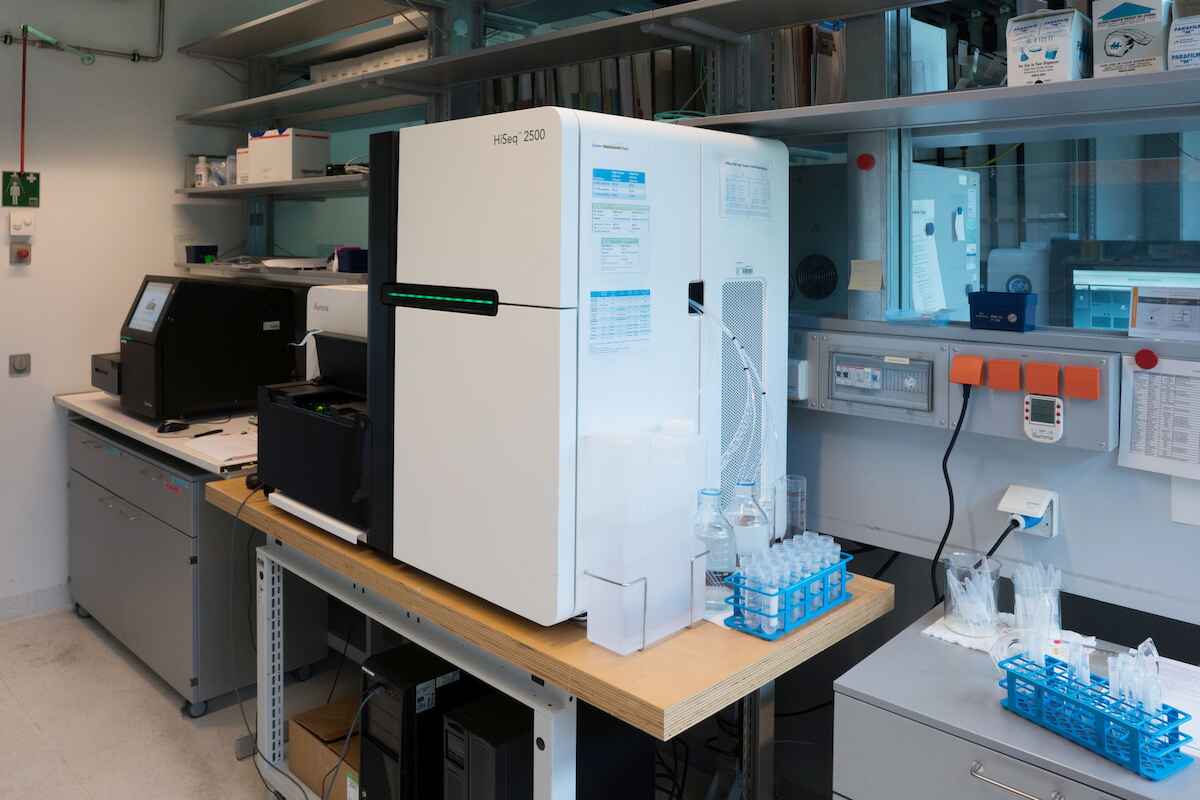
Thanks to modern sequencing devices, the cost of decoding a complete human genome is only about 1000 euros today.
At the beginning of the new millennium, DNA sequencing underwent a technical revolution. The machines became faster and faster as well as more cost efficient. In 2004 Pääbo’s team was in a position to dare to tackle the complete DNA in the cell nucleus of Neanderthals. This nucleic DNA consists, as in modern humans, of three billion base pairs, in contrast to mtDNA which consists of 16,500.
Sequencing technology was, of course, not the only hurdle that Pääbo had to overcome. The researchers in the human genome project had the relative luxury of being able to sequence the DNA of living humans, in other words, material that is superabundant in intact form. Pääbo, in contrast, had to extract the DNA from old bones that he had been given by museum curators and archeologists. The problems he encountered confirmed many of the doubts raised by skeptics. In their analyses, Pääbo and his team determined that as much as 99.9% of the DNA in Neanderthal bones stemmed from microbes that had infested the bones after death and degraded them. Furthermore, the sparse remaining original Neanderthal DNA had decomposed into many short fragments, some of which were biochemically modified, that the team now had to piece back together like a gigantic puzzle to form the complete genome.
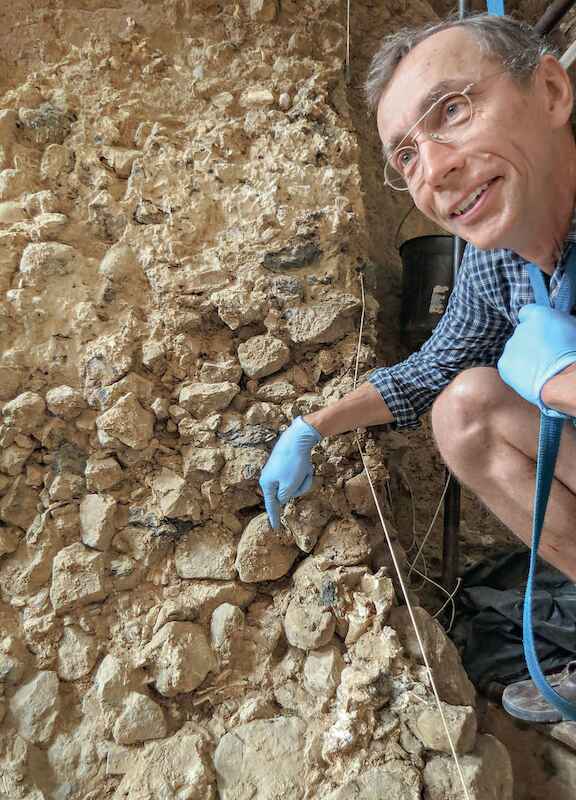
Svante Pääbo at an excavation at the archeological site Caune de l’Arago in France. 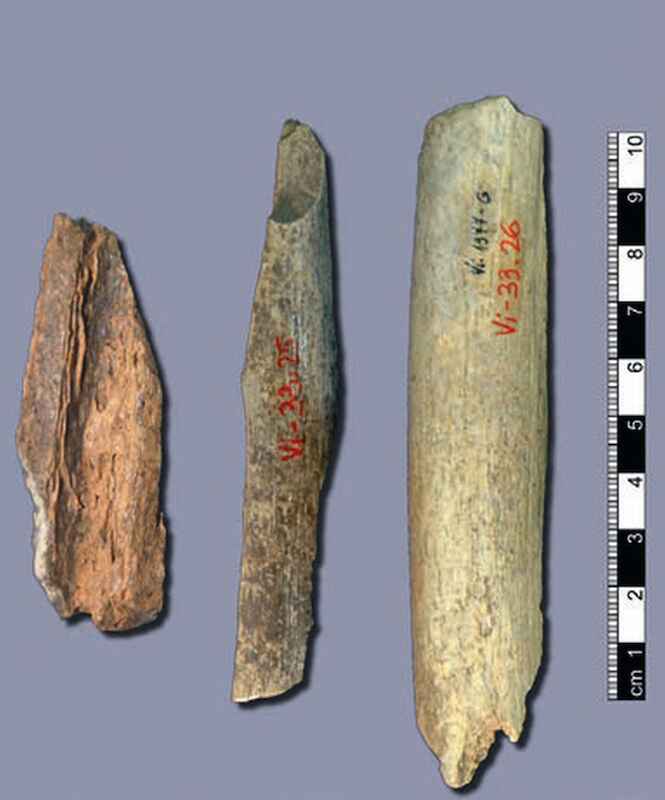
Bone fragments from three female Neanderthals from the Vindija cave in Croatia. The level of old DNA in these »super bones« is as high as 4%, which is particularly high.
Despite the many complications, Svante Pääbo was firmly intent on reaching his goal. Over and over again at their weekly conferences, his team thought of new solutions to the numerous problems they encountered. A problem that proved to be particularly difficult was separating the Neanderthal DNA from the contamination with DNA from modern humans, which could stem from team members, archeologists, or museum curators, for example. Above all in the beginning, it frequently happened that Pääbo and other paleogeneticists did not work with old DNA in their analyses, but instead mistakenly amplified their own DNA or that of colleagues that had contaminated their samples. What at the scene of a crime can help convict a perpetrator spoiled the work of the paleogeneticists. Even several of the chemicals that they used contained traces of DNA from presentday humans.
To overcome this problem, Pääbo began at a very early stage to only work under cleanroom conditions, such as those corresponding to the scrupulous requirements found in the chip industry. Accordingly, the Max Planck Institute for Evolutionary Anthropology in Leipzig, which opened in 1997, has cleanrooms in its basement that are designed precisely according to Pääbo’s ideas and that minimize contamination. Staff can only enter the laboratories wearing protective clothing and a mouth visor, the air is filtered, and at night the labs are irradiated with ultraviolet light to destroy any remaining foreign DNA, like that in dust. Furthermore, the lab rooms are regularly disinfected using chlorine bleach. “With regard to contamination, I had developed a genuine paranoia”, says Pääbo. Yet in the end his meticulousness paid off.

“We have to enrich the level of original DNA to 20%. It was this enrichment that made the sequencing economically feasible in the first place.”
Svante Pääbo
To prevent contamination, Pääbo’s team removes the DNA from the inside of bones by cautiously using a dental drill. To ensure that no foreign DNA is amplified, the scientists also regularly conduct dummy extractions, in which no material at all from the Neanderthals is put in the reagents. If DNA is nonetheless detected during such control tests, then it could only stem from a contamination.
A further problem is the sometimes extremely low amount of original DNA in the Neanderthal bones. The paleogenetically most productive bone, called Vi80, stems from a Neanderthal whose remains were uncovered by archeologists in the Vindija cave in Croatia. Vi80, after all, still contains 4% original Neanderthal DNA. To obtain even more such qualitatively valuable bones, Pääbo visited the Institute for Paleontology and Geology in Zagreb. There he found a box with further heavily damaged Neanderthal bones from the Vindija cave. Some of these bones had been intentionally shattered, and their surfaces bore traces of scraping by stone tools. These are indications of cannibalism: “The Neanderthals in the cave in Vindija presumably had the misfortune of encountering hungry neighbors”. This might also be the cause for the unusually high level of original DNA. Since these bones were separated from meat shortly after death, they dried faster, making it impossible for very many microbes to settle and trigger decomposition.

Although a 4% level of original Neanderthal DNA was itself an acceptable starting point, it was not sufficient for proceeding: “We have to enrich the level of original DNA to 20%”, says Svante Pääbo. To achieve this, his team employed various tricks, including molecular scissors, which preferentially cut off microbial genetic material from fungi and bacteria. “It was this enrichment that made the sequencing economically feasible in the first place”, added the Swede. At the beginning of the project the Pääbo team sent its DNA extracts to a firm in the United States for sequencing, which charged high fees to do the work. And the lower the level of original DNA, the higher was the number of expensive machine runs that were necessary. Pääbo subsequently switched to much faster sequencers.
Furthermore, the DNA of our ancestors who died thousands of years ago exhibits typical molecular biological changes that can serve as a marker to help distinguish them from DNA contamination from modern humans. Normally DNA consists of the four nucleotide bases adenine (A), guanine (G), cytosine (C), and thymine (T). Pääbo and his team determined in fragments of old Neanderthal DNA, however, that the cytosine was sometimes replaced by uracil (U) as a result of biochemical decay (the loss of an amino group). Uracil is a base that normally only occurs in RNA. The polymerase chain reaction that the scientists employ to amplify the old DNA increases these U positions but as T positions. The consequence was that where there had been a C in the original Neanderthal DNA, after amplification Pääbo’s team now erroneously found a T.
The team had to statistically correct for these disturbing errors in translation by using complicated algorithms in a computer. At the same time, however, the errors have the advantage of clearly demonstrating that the questionable DNA segments do actually stem from a Neanderthal and not from a modern human, in whose DNA such CT substitutions do not occur. “Such biochemical changes enable us to use statistical computer analysis of a 50 base pairlong strand of DNA to safely decide whether it stems from a Neanderthal, a modern human, or a bacterium”, according to Pääbo.
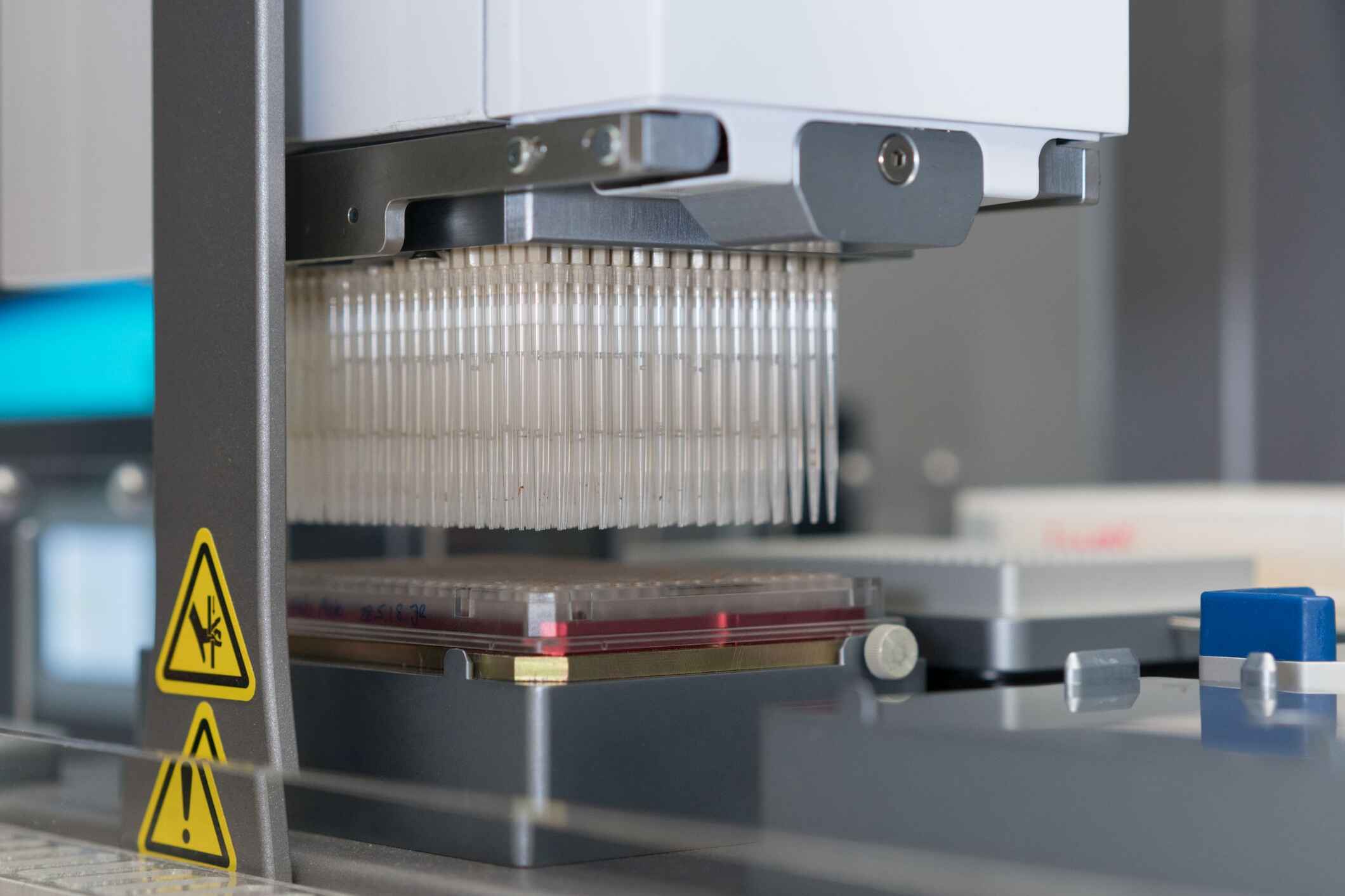
Yet it was not just technical problems that stressed Pääbo and his colleagues. Scientific competitors were also breathing down their necks. Starting in 2005, Pääbo had worked with the geneticist Edward M. Rubin from the American Lawrence Berkeley National Laboratory, who was pursuing a different approach. Rubin’s team amplified the Neanderthal DNA using bacteria, which was the conventional method in the period before the introduction of sequencing machines. Yet since that approach proved to be both too timeconsuming and too materialintensive, Pääbo cancelled the collaboration in 2006. Rubin and his colleagues continued alone and subsequently became competition, including in the acquisition of the rare Neanderthal bones. Pääbo: “My biggest nightmare was that, after all the effort that we had made, another group would publish the Neanderthal genome just before us”.
In 2010 Pääbo’s team had decoded 60% of the Neanderthal genome. They decided – in part, in light of competition – to publish an interim report in the esteemed journal Science. In 2014 the team was finally able to present the entire Neanderthal genome.
This was when the most interesting part of the work began, namely the comparison of the Neanderthal genome with that of modern humans. The DNA comparison revealed that there had been gene flow from the Neanderthals to early modern humans. Both groups met about 50,000 years ago, presumably in the Middle East, and interbred. As a consequence of this mixture, the genome of today’s humans outside of Africa contains some 1.5–2.1% Neanderthal genes. This gene flow was at least in part advantageous for the early modern humans coming from Africa. Neanderthals had already been living in Europe for many thousands of years and had adjusted well to the northern climate and the regional illnesses. The acquired genes presumably strengthened the immune defense of modern humans. Negatively, the Neanderthal heritage may result in a stronger inclination to develop allergies or an addiction.
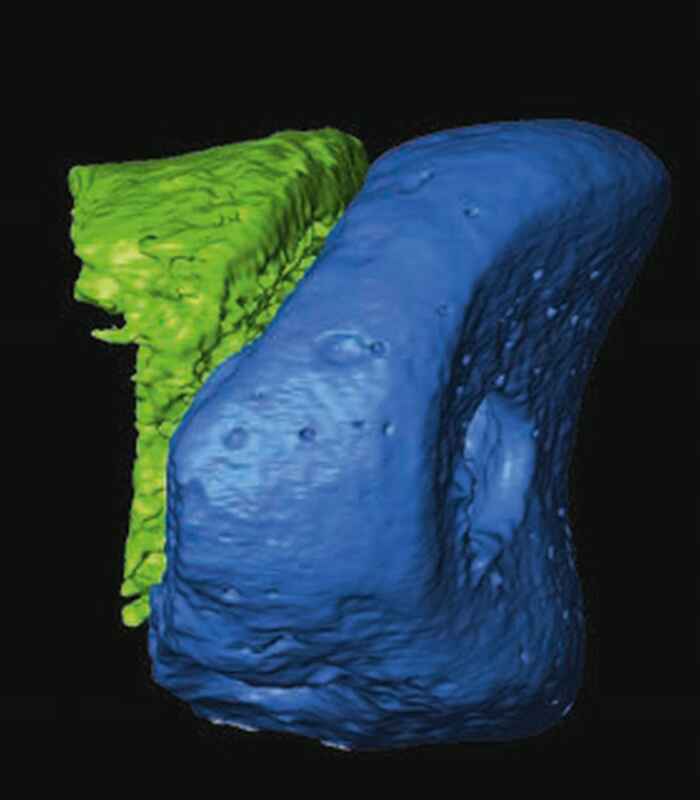
A CT scan of the segment of a finger bone from the Denisova cave. Thanks to advanced sequencing technology, this small sample sufficed to decode the entire 
“In total we have found some 30,000 positions in which the genome of Neanderthals differs from that of almost all modern humans”, Pääbo says. “They could help provide answers to the question of what makes modern humans modern, at least in a genetic sense”. It is very probable that the key to the superior cognitive capacities of modern humans can be found in these regions of the genome.
In retrospect, Neanderthals were not characterized by great creativity, although their brain was about a hundred cubic centimeters larger than that of today’s humans, which at least some paleoanthropologists take as a point of reference with regard to cognitive potential. When the Neanderthals died out about 39,000 years ago, they were still using stone tools similar to those used in their early period 400,000 years ago. Ship building and traveling by water were also foreign to them. In contrast, modern humans have developed to become the ruler of the Earth and nature in just 50,000 years and created today’s civilization and modern technology. It is possible that the reason for this difference in speed of innovation lies in those 30,000 differences between the genomes.

In 2012 Pääbo managed to reach another sensational achievement. His team decoded the complete genome of a different form of early man that had lived in theDenisova cave in the Altai mountains of western Siberia some 45,000 years ago. Only a small finger bone was available to the scientists for genetic analysis. It, however, was very well preserved and contained an unusually high level of original DNA. The result was that Denisova man was a distant relative of the Neanderthals. His genes contribute up to 5% of the genome of today’s population of the islands in East Asia. Denisova DNA also accounts for 0.2% of the genome of Native Americans.
In 2017 and 2018, Pääbo and his colleagues analyzed the particularly well preserved bones of further Neanderthals from Belgium, France, Croatia, and the Caucasus who had lived there in the period from 39,000 to 47,000 years ago. Their genomes exhibited a stronger resemblance to that of the “European” Neanderthals who had interbred with modern humans than with Denisova man. The team did not find any DNA from modern humans in these Neanderthal genomes. “It is possible”, Pääbo assumes, “that DNA was largely transferred in only one direction, from Neanderthal to modern humans”.
The goal of the scientists is to be able in the future to examine very short DNA fragments only 20 to 25 base pairs in length. They could then put their sights even on very old hominid bones or on those in warm climates that are very weatherbeaten; in either case, the DNA of such bones consists almost only of short fragments as a consequence of natural degradation and disintegration. Pääbo hopes, for example, to be able to solve the puzzle of the Hobbits. This diminutive early human, also known as Homo floresiensis – who only grew to a size of about one meter – lived until 50,000 years ago on the Indonesian island of Flores. The DNA in the Hobbit bones found in a cave in 2003 has however been particularly strongly affected by the hot, humid climate. It is still uncertain which type of Homo the Hobbits descended from or whether they underwent an evolutionary process of dwarfing, which would have offered them – as it did the pygmy elephants on the same island – a higher chance of survival given a limited supply of food.

Thanks to the hunt for shorter and shorter DNA segments, Pääbo’s team has recently even succeeded in extracting mt-DNA from 430,000 year old hominid bones that had been found in the cave Sima de los Huesos in what is today northern Spain. Several classical paleoanthropologists had thought that these bones were remains from Homo heidelbergensis on the basis of their anatomic features. Pääbo has meanwhile proved that the bones from Sima de los Huesos most probably stem from early Neanderthals.
Svante Pääbo owes his early scientific fame to a scientific error. The presumed DNA from an Egyptian mummy that he believed to have amplified in 1985 stemmed in reality from bacteria from his immune system experiments for his dissertation that had contaminated his mummy samples. Pääbo realized this later when he had gathered more experience in working with extractions of old DNA. The DNA fragments that he had isolated in 1985 had 150 base pairs, too long for a 2400 year old mummy from hot Egypt. At the time of that publication neither he nor the scientific referees from Nature were aware of the dangers posed by contamination.
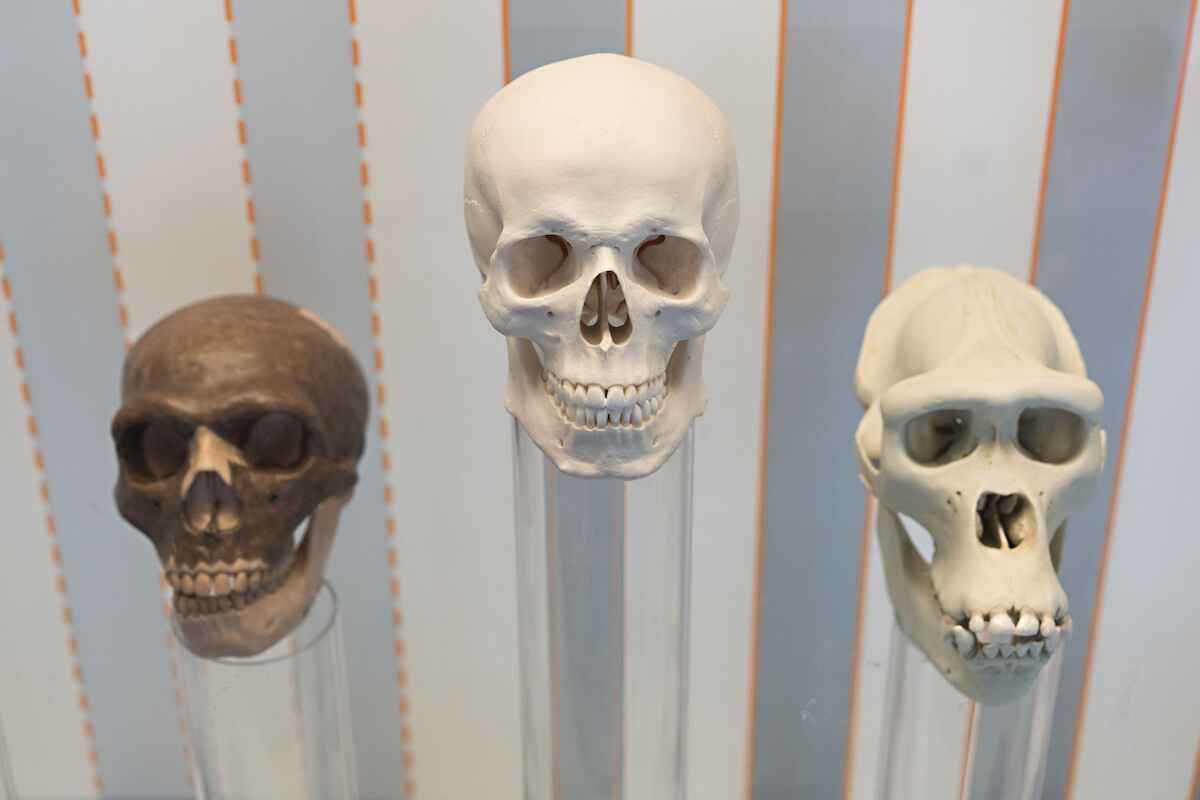
Similar in basic structure but very different in detail: the skulls of a Neanderthal, a modern human, and a gorilla (from left to right). 
The foyer of the Max Planck Institute for Evolutionary Anthropology in Leipzig.
That error has, of course, not done any harm to Svante Pääbo’s reputation as being a pioneer of paleogenetics, as is apparent from the numerous scientific prizes he has been awarded. “This is often the typical course of science that opens up new fields of research using the trial and error method”, says the Swedish physician. What was decisive was that he ultimately made his vision of decoding the genome of extinct Homo species – which he had already had as a student – come completely true. And without the erroneous mummy report, he may not have had the necessary initial euphoria to embark on his journey to new scientific shores.
The prizewinner
Svante Pääbo was born in Stockholm in 1955, the son of the Swedish biochemist and Nobel Prize winner Sune Bergström. Pääbo grew up with his mother, who took him on an extended trip to Egypt when he was 13 years old. “The history of ancient Egypt has always fascinated me. I was impressed by the pyramids, pharaohs, and mummies”.
After completing school, Pääbo initially studied Egyptology at the University of Uppsala, but discontinued it after a few semesters because “everything went too slow” in that subject. He longed for more suspense and at his father’s prompting began studying medicine. His fascination with Egyptian mummies, however, did not let go of him. As a graduate student – pursuing his doctorate in immunology – he secretly searched for DNA in ancient Egyptian mummies, and he found it. In doing so, he laid the foundation stone for the new field of research called paleogenetics.
After a period as a postdoc at the University of California in Berkeley, Pääbo accepted an invitation to join the Zoological Institute of the Ludwig Maximilians University in Munich. Since 1997, Svante Pääbo has been one of the five directors of the Max Planck Institute for Evolutionary Anthropology in Leipzig, which was newly founded that year.
While in Munich, Pääbo succeeded in extracting parts of the mitochondrial DNA of a Neanderthal. In 2010, his Leipzig research group presented the first version of the genome of a Neanderthal. In 2014 it was completely mapped. Comparisons revealed that the genome of today’s humans in Europe and Asia includes parts of the Neanderthal’s genome.
Svante Pääbo prefers to spend his limited free time with his two children, aged 5 and 13, saying, “That keeps me busy nearly all the time these days”.
Svante Pääbo has already been awarded numerous major scientific prizes. He intends to use the funds that accompany the Körber-Prize to further refine his methods and to study even shorter and older snippets of DNA from extinct hominins in the future. “In this way we hope to be able to analyze the more than 500,000 year old DNA of the ancestors of the Neanderthals and other extinct types of humans”.

Awards Ceremony 2018
Photos of the presentation of the Körber European Science Prize 2018 to Svante Pääbo in the Hamburg City Hall. These photos are free to use in the context of news coverage with the credits Körber-Stiftung/David Aussenhofer given below.
The Genes of the Neanderthals

